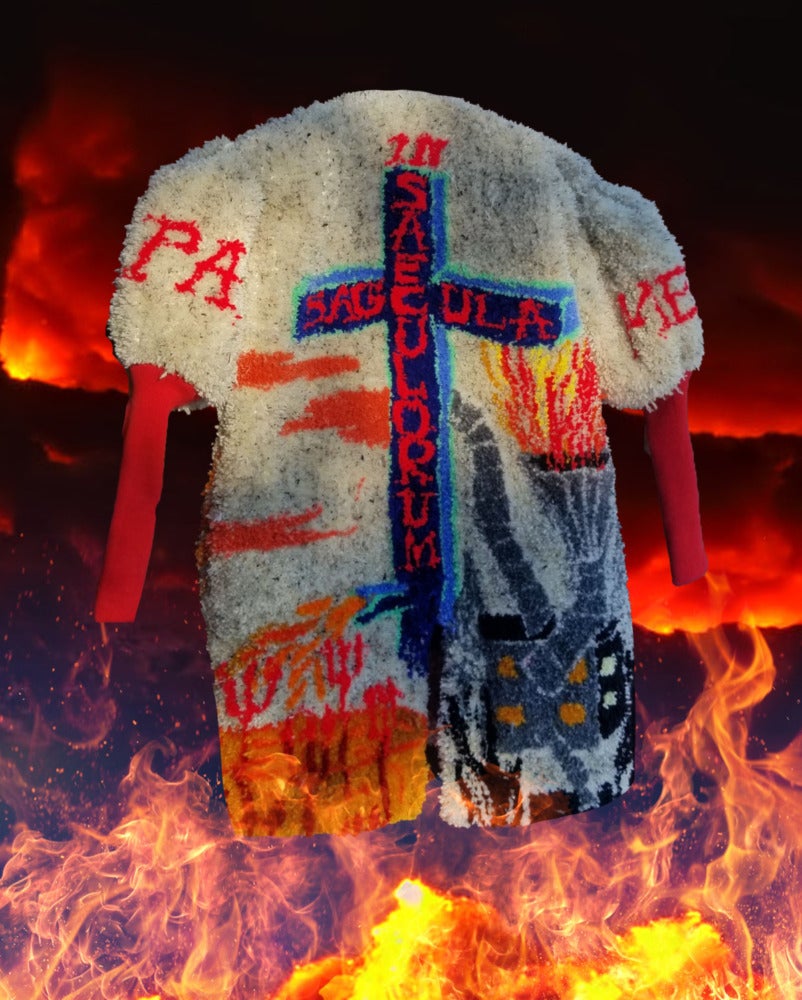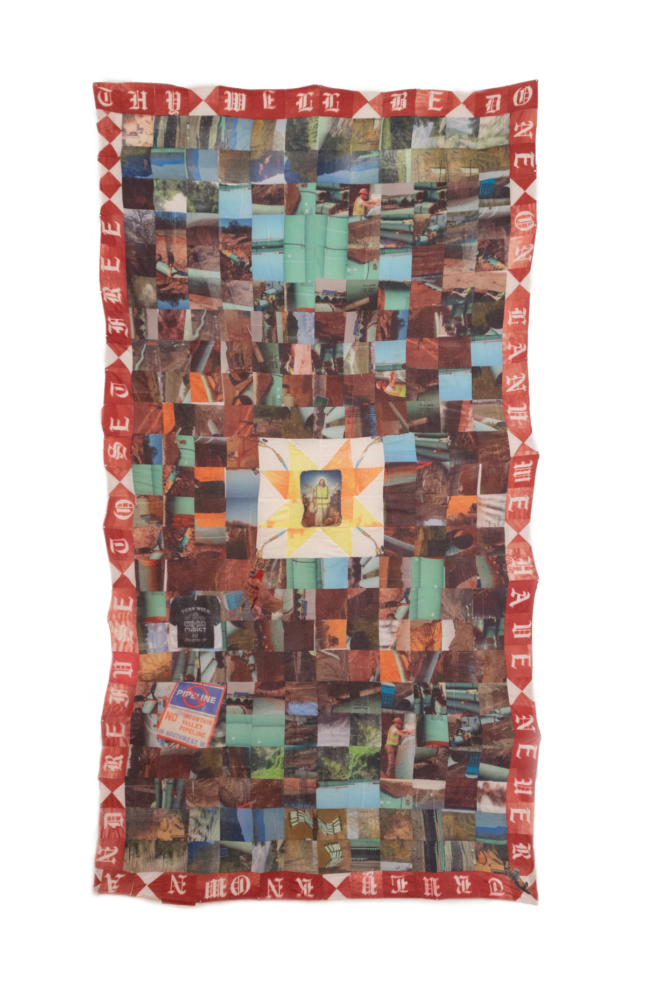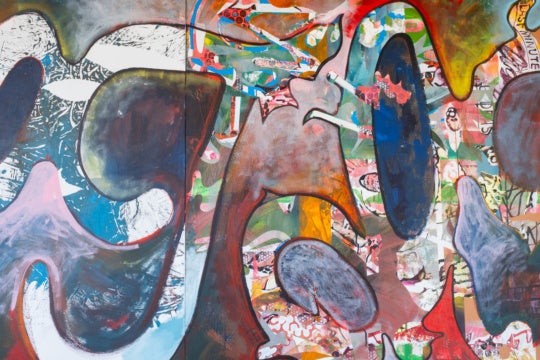
Molly Z.G.’s solo exhibition Almost Heaven :^) at Institute 193 in Lexington, KY, presents a series of boldly colored hand-made rugs. Patterned with various repeating geometric forms, each rug includes an amalgam of imagery including Christian iconography, pop-culture, and fantasy elements. In addition to these wall hangings, mannequins in the center of the gallery wear two of Molly’s handmade rug pieces designed as jackets, and on the left wall, four horse-head rugs with braided straps face each other as their eyes follow the viewer around the gallery. Exhibited with a miniature bright blue Pinball machine outfitted with a cross and image of the Virgin and Child that rests in the back corner, the exhibition falls somewhere between reality and fiction, gallery and boutique.
Like a glimpse at a potential future, the futuristic characteristics of Molly’s designs (inspired by James Cameron’s 1984 science-fiction film The Terminator) hint at the apocalyptic end of society as we know it via climate change or the U.S.’s continued restriction of constitutional rights. In the piece land’s end (2021), for example, a triangular shaped rug presents the face of a blue figure with long blonde hair set against a red and green patterned backdrop. The figure is presented with two knives going through her eyes possibly in reference to the various martyred female Catholic saints brought to death by stabbing, and simultaneously calls to mind current instances of violence against women and bills aimed at restricting reproductive rights.

In where do we go when we die? Pittsburgh?, Z.G.’s wearable rug features a dark factory building with a flaming smokestack on one side, adjacent to red pitchforks within a fiery desolate land. A cross in the center defines the two spaces and references the historical tradition of painting the biblical scene of The Last Judgement, (the second coming of Christ in which souls are forever stricken to heaven or hell) but here instead of heaven our options are hell or Pittsburgh. Pairing the desolate landscape and factory town hints at the possible impending effects of climate change while the nod to The Last Judgement suggests a personal critique of the mythology of Christianity.
Molly Z.G.’s use of multi-layered textiles connects their work to the tradition of quilting that has long existed in the craft vernacular of Appalachia. While historically quilting would contain references to family history by, for example, the inclusion of pieces of old clothing, Molly Z.G. uses the iconography that has shaped their upbringing to recall where they came from and to interpret its effects on their self and region. This is particularly clear in the quilted piece manifest destiny, (2021) a piece made of various images of pipelines, constructions workers, and the landscape with a central figure of Jesus wearing a construction vest. As noted in the exhibition’s text, the central image of Jesus is a direct reference to the Pittston Coal Mine Strike of 1989, a reminder of the regions’ continued struggles to care for the land and its workers.
Despite its brightly colored palette and peculiar imagery, the work speaks to the ongoing struggles of a region that has long dealt with oppression, drug use, poverty and now climate change, and critiques the all too frequent use of religion to justify oppressive systems. Wrapping this all up in a personal fantastical realm seems partly to serve as therapeutic expression and a method of exploring personal dissatisfaction with a region one simultaneously loves but wishes would change. At the same time, the boutique style installation of their work suggests that even in this imaginative and dark future our reliance on capitalism remains intact. For the audience, this results in an exhibition that is partly comical and partly disturbing but also expands on the depths of culture and struggle present throughout areas of Appalachia.
Almost Heaven :^) runs through November 8 at Institute 193, Lexington.




